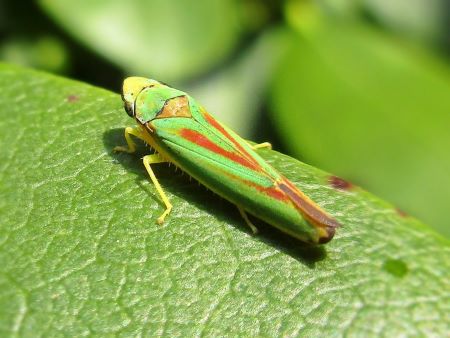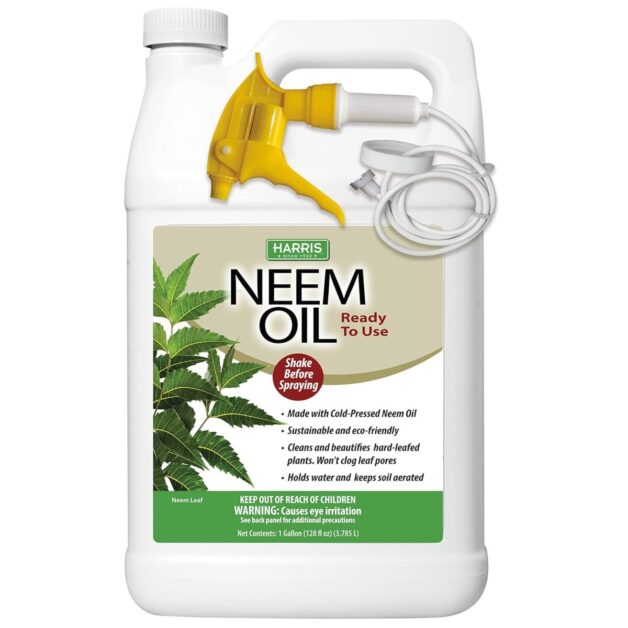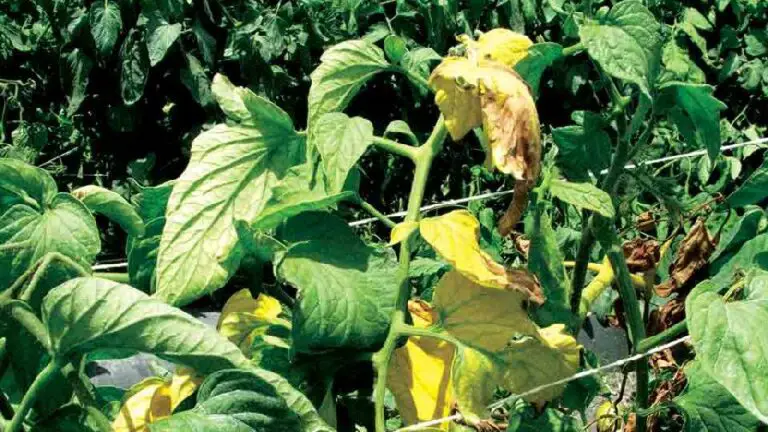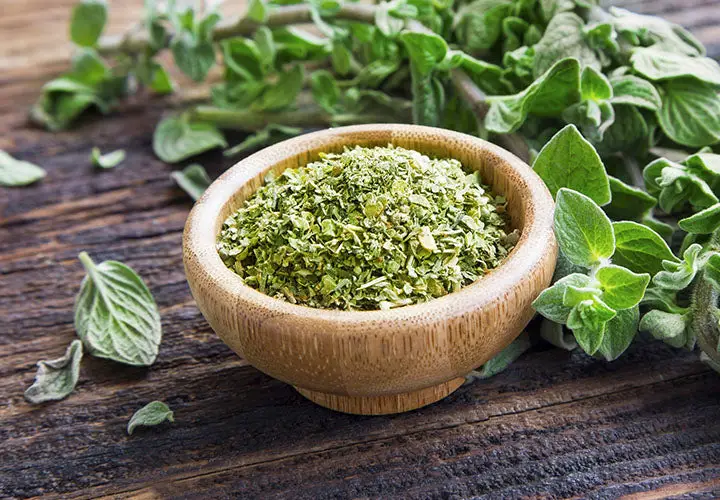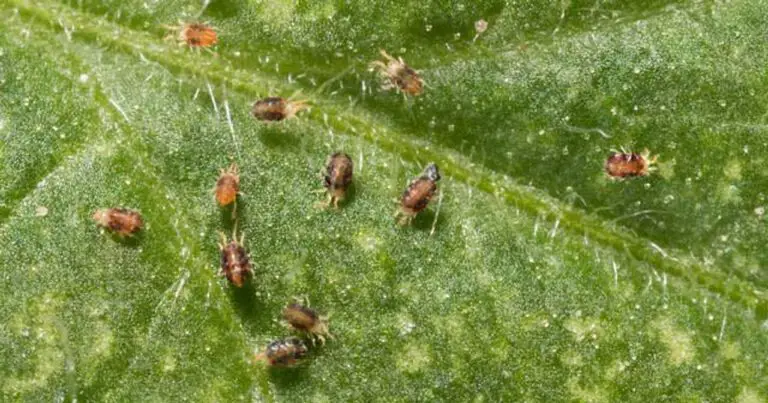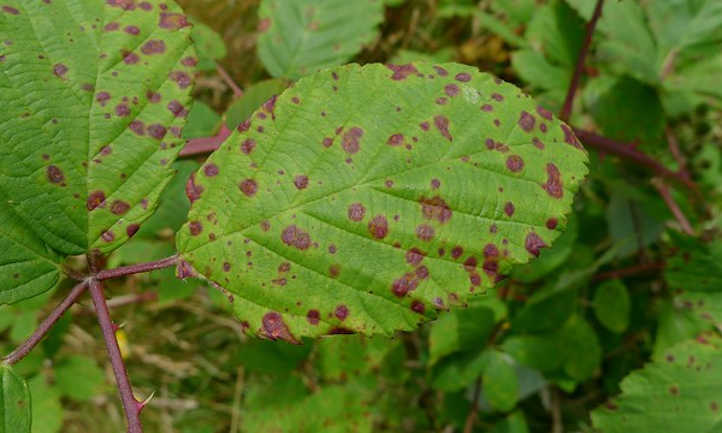Get Rid of Leafhoppers: Effective Methods to Control and Prevent These Pests from Your Plants
Are your plants under attack by tiny, voracious invaders? Leafhoppers might be the culprits! These minuscule pests might seem harmless at first glance, but their appetite for plant sap can wreak havoc on your garden. But fear not! In this comprehensive guide, we’ll unveil effective methods to rid your plants of these pesky critters and keep them at bay for good. From natural remedies to preventative measures, we’ve got you covered. Stay tuned to discover how you can protect your beloved plants and reclaim your garden oasis. Don’t let leafhoppers call the shots in your garden – take control today!
Table of Contents
Understanding the Threat: Leafhoppers and Their Impact on Plants
Leafhoppers are a common pest that can have a significant impact on the health and productivity of plants. These small insects feed on the sap of plants, causing damage to leaves, stems, and fruit. The damage inflicted by leafhoppers can result in stunted growth, leaf discoloration, distorted leaves, and reduced yield.

- Disease Vectors: Leafhoppers are known to transmit various plant diseases such as aster yellows, phytoplasma, and viral infections.
- Devastating Effects: These diseases can lead to a decline in plant health and, in severe cases, result in the death of infected plants.
- Importance of Awareness: Understanding the threat posed by leafhoppers is vital for gardeners and farmers.
- Effective Management: Awareness enables individuals to take necessary precautions to manage and prevent infestations.
- Crop Protection: By recognizing leafhoppers’ role in disease transmission, growers can implement strategies to safeguard their crops and promote plant health.
“Leafhoppers: The Really Wild Life of Insects” provides an engaging and informative exploration of these often-overlooked creatures. As a reader, I found the book to be both educational and visually captivating, with its vibrant illustrations and clear, accessible language. It offers a comprehensive overview of leafhoppers, delving into their behavior, habitats, and ecological importance, making complex scientific concepts understandable to readers of all ages.
Moreover, “Leafhoppers” raises awareness about the conservation of leafhopper populations and their habitats, inspiring readers to appreciate and protect these valuable insects. While the book’s specialized topic may not appeal to all readers, its entertaining anecdotes and fun facts kept me engaged from cover to cover. Overall, “Leafhoppers” is a must-read for anyone curious about the fascinating world of insects and their role in the ecosystem.
- Comprehensive Coverage: “Leafhoppers” offers an in-depth exploration of these fascinating insects, providing readers with a wealth of information about their behavior, habitats, and ecological significance.
- Educational: The book serves as an educational resource, offering insights into the role of leafhoppers in various ecosystems and their interactions with other organisms.
- Visual Appeal: With vibrant illustrations and photographs, “Leafhoppers” engages readers visually, enhancing their understanding and appreciation of these tiny creatures.
- Accessible Language: The author uses clear and accessible language, making complex scientific concepts understandable to readers of all ages.
- Entertaining: Despite its informative content, “Leafhoppers” is engaging and entertaining, captivating readers with intriguing anecdotes and fun facts about these often-overlooked insects.
- Conservation Awareness: The book raises awareness about the importance of conserving leafhopper populations and their habitats, inspiring readers to take action to protect these valuable species.
- Suitable for All Ages: Whether you’re a seasoned entomologist or simply curious about the natural world, “Leafhoppers” offers something for everyone, making it a versatile and enjoyable read.
- Limited Availability: “Leafhoppers” may be challenging to find in some bookstores or libraries, requiring special ordering or online purchases.
- Specialized Topic: While fascinating for insect enthusiasts, the subject matter may not appeal to all readers, limiting its audience.
- Lack of Interactivity: Some readers may prefer a more interactive format, such as a field guide with identification keys, to enhance their learning experience.
- Price: Depending on the edition and format, “Leafhoppers” may be relatively expensive, impacting the accessibility of the book for some readers.
- Focus on Leafhoppers: While informative about leafhoppers specifically, the book may not provide as much coverage of other insect groups, limiting its scope for readers interested in broader entomology topics.
- Technical Detail: For casual readers, the book’s level of technical detail may be overwhelming or unnecessary, detracting from the overall reading experience.
- Potential Bias: Depending on the author’s perspective, “Leafhoppers” may contain biases or subjective interpretations of scientific information, which could influence readers’ perceptions.
Identifying Leafhopper Infestations: Signs and Symptoms to Look Out For
The first step in effectively managing leafhopper infestations is being able to identify the signs and symptoms of these pests. Leafhoppers are small, winged insects that can be found on a wide variety of plants. They are typically green or brown in color, although some species may have vibrant patterns or markings.

- Hopper Burn:
- Pale or yellow spots on plant leaves.
- Often in a stippled pattern.
- Caused by leafhoppers feeding on plant sap.
- Can lead to stunted or distorted growth.
- Honeydew and Sooty Mold:
- Leafhoppers excrete sticky honeydew.
- Attracts ants.
- Promotes the growth of black, powdery sooty mold on leaves.
By being vigilant and regularly inspecting your plants for these signs and symptoms, you can quickly identify and address leafhopper infestations before they have a chance to cause significant damage.
The Life Cycle of Leafhoppers: Key Stages and Vulnerabilities
Leafhoppers, also known as Cicadellidae, undergo a fascinating life cycle that consists of several key stages. Understanding these stages is crucial for effectively managing leafhopper populations and minimizing their impact on plants. Let’s delve into the life cycle of leafhoppers, exploring their vulnerabilities along the way.
- Egg Laying: Female leafhoppers lay eggs in plant stems or leaves using a sharp ovipositor.
- Egg Clusters: Eggs are typically laid in groups called “nymphal colonies” and have a spindle shape.
- Incubation Period: Eggs hatch after about ten days, leading to the emergence of nymphs.
- Nymph Development: Nymphs undergo several molts over two to three weeks, shedding exoskeletons as they grow.
- Instar Stages: Nymphs progress through five instar stages, each resembling the adult leafhopper more closely.
- Maturity: The final molt results in the mature leafhopper, capable of flight and reproduction.
- Jumping Ability: Leafhoppers can jump long distances thanks to powerful muscles in their hind legs.
- Vulnerabilities: Eggs and nymphs are susceptible to predators, weather conditions, and natural enemies like parasitic wasps.
- Impact of Pesticides: Excessive pesticide or herbicide use can disrupt leafhoppers’ life cycle and population dynamics.
Understanding the vulnerabilities of leafhopper life stages is essential when implementing control strategies. By targeting these critical periods, gardeners and farmers can employ specific management practices to curtail leafhopper populations and sustain healthier plant growth.
Cultural Practices for Leafhopper Prevention: Creating an Unfavorable Environment
Creating an unfavorable environment for leafhoppers is an essential cultural practice that can help prevent their infestation and minimize damage to your plants. By understanding the conditions that favor leafhoppers and taking steps to eliminate or reduce them, you can significantly reduce the risk of an infestation.
- One of the most effective ways to create an unfavorable environment for leafhoppers is to regularly remove and destroy any weeds, grasses, or other vegetation that may serve as alternative hosts or breeding grounds.
- Leafhoppers are attracted to lush, green foliage, so keeping the surrounding area clean and free from excess vegetation can help deter them from settling in your garden.
- Additionally, maintaining proper spacing between plants and adequate air circulation can also discourage leafhoppers, as they prefer crowded and poorly ventilated conditions.
Maintaining Proper Plant Health: A Natural Defense Against Leafhoppers
Maintaining proper plant health is essential for creating a natural defense against leafhoppers. These tiny insects can wreak havoc on your plants, feeding on their sap and causing damage that can stunt growth and even lead to death. By focusing on the health and resilience of your plants, you can greatly reduce their susceptibility to leafhopper infestations.
Provide essential macronutrients (nitrogen, phosphorus, potassium) and micronutrients (iron, magnesium).
Regular soil testing or water analysis helps identify deficiencies.
Targeted amendments optimize plant health.
Avoid overwatering, which creates favorable conditions for leafhoppers.
Underwatering stresses plants and makes them more vulnerable.
Find the right balance for adequate moisture.
Ensure good drainage to prevent stagnant water.
Proper air circulation deters leafhoppers and pests.
Remove weeds and debris that serve as hiding spots.
Introduce beneficial insects for natural pest control.
By following these practices, you can maintain healthy plants and reduce the impact of leafhopper infestations. 🌿
Physical Barriers: Using Nets and Covers to Keep Leafhoppers at Bay
Physical barriers such as nets and covers can be highly effective in preventing leafhoppers from infesting your plants.

- Select Lightweight Netting:
- Choose a netting materiall that is lightweight and easy to handle.
- Ensure it provides adequate coverage for your plants.
- Complete Coverage:
- Secure the netting tightly around your plants.
- Leave no gaps for leafhoppers to enter.
- Inspect regularly for holes or tears.
- Consider Neighboring Plants:
- Be aware of nearby plants that may serve as alternative hosts for leafhoppers.
- Cover these neighboring plants as well to prevent migration.
By following these steps, you can effectively use nets and covers to protect your crops from leafhopper damage. 🌿
Introducing Beneficial Insects: Natural Predators for Leafhopper Control
One of the most effective and natural approaches to controlling leafhopper populations in your garden is to introduce beneficial insects as natural predators. These beneficial insects can play a crucial role in keeping leafhopper populations in check, reducing the need for chemical interventions.
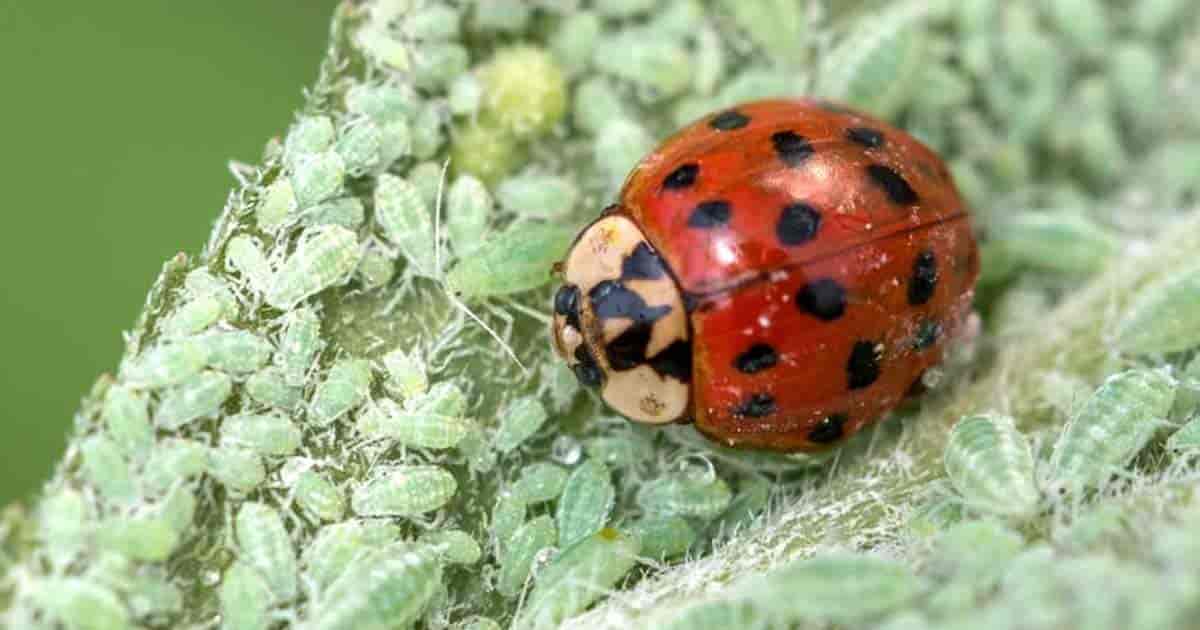
- Ladybugs as Predators: Ladybugs, also known as lady beetles, are effective natural predators of leafhoppers.
- Voracious Feeders: They consume leafhoppers in significant numbers within a short timeframe.
- Attracting Ladybugs: To attract ladybugs to your garden, plant their favorite vegetation such as dill, fennel, and yarrow.
- Providing Habitat: Create a conducive environment by offering shelter in the form of small piles of stones or straw.
- Lacewings for Control: Lacewings, especially their larvae, are beneficial in controlling leafhopper populations.
- Effective Predation: Lacewing larvae feed on leafhopper nymphs, helping to regulate their numbers.
- Floral Attractions: Plant nectar-rich flowers like marigolds, sweet alyssum, and cosmos to draw adult lacewings to your garden.
- Egg Laying Sites: Lacewings lay eggs on plants with abundant prey, ensuring a continuous supply of leafhopper nymphs for their larvae to feed on.
- Maintaining Diversity: A diverse range of plants ensures a steady food source for both ladybugs and lacewings, promoting natural pest control in your garden.
Using Organic Sprays: Safe and Effective Solutions for Leafhopper Infestations
Organic sprays offer a safe and effective solution for managing leafhopper infestations in your garden. These natural remedies are free from harmful chemicals, making them ideal for environmentally conscious gardeners. Organic sprays work by targeting leafhoppers directly while minimizing the risk of collateral damage to beneficial insects and plants.
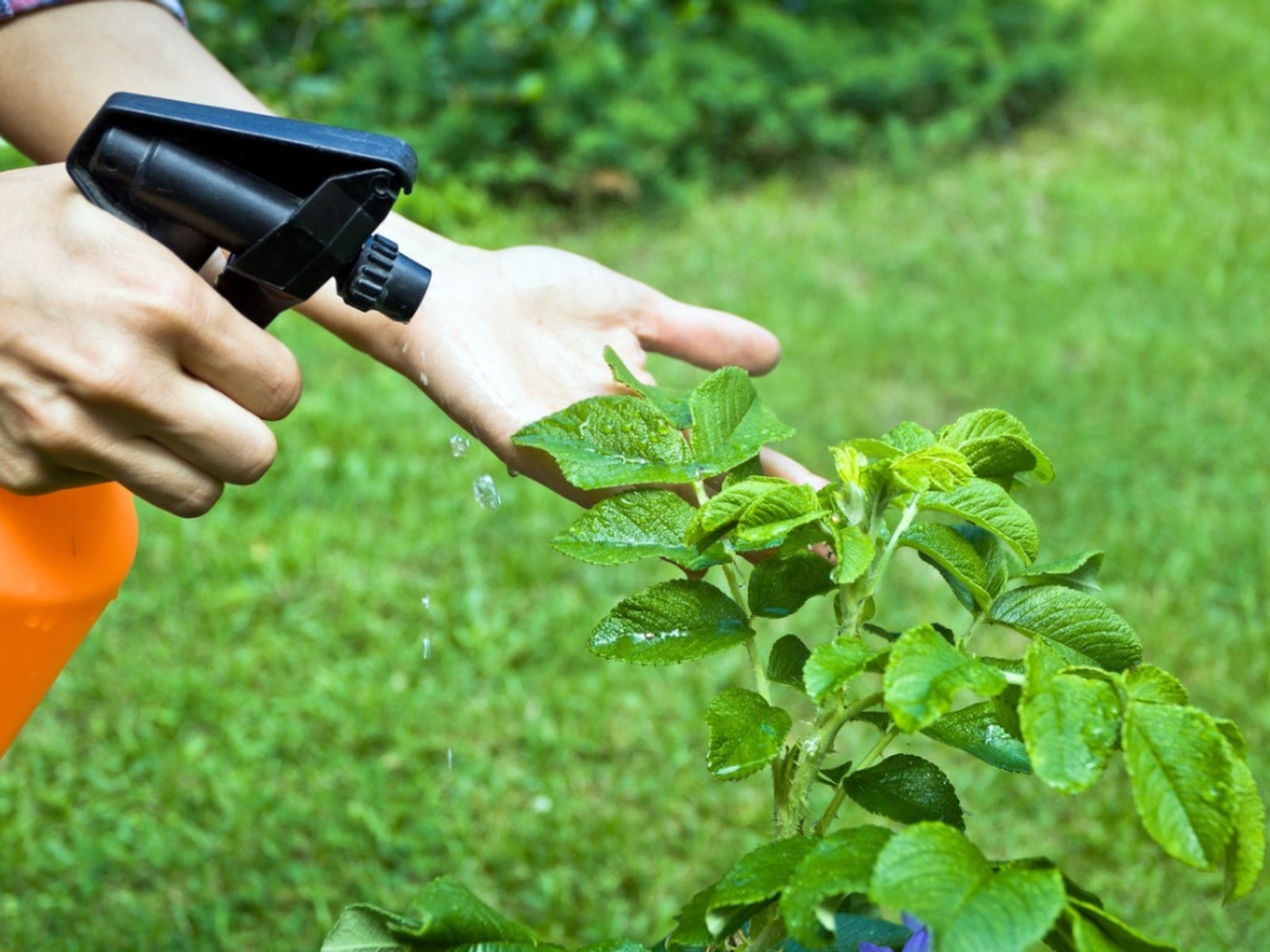
- Neem Oil:
- Derived from the neem tree.
- Disrupts leafhoppers’ molting process and inhibits feeding.
- Acts as a deterrent, making treated plants less attractive to pests.
- Mix with water according to product instructions and apply using a sprayer.
- Cover both sides of leaves thoroughly.
- Insecticidal soap:
- Made from potassium salts of fatty acids.
- Targets leafhoppers without harming beneficial insects or plants.
- Disrupts leafhoppers’ cell membranes, causing dehydration and death.
- Dilute with water per package instructions and apply directly to affected plants.
- Coat leaves thoroughly, especially undersides where leafhoppers congregate.
- Integrated Pest Management (IPM):
- Combine organic sprays with other strategies.
- Regular monitoring and early detection of leafhopper populations.
- Cultural practices and proper plant health are essential.
- Minimize environmental impact while protecting plants.
By following these steps, you can effectively manage leafhoppers and maintain healthy plants in your garden.
Using Harris Neem Oil Spray to combat leafhopper infestations has been a game-changer in my gardening experience. Its natural and organic composition provides effective control against these troublesome pests without harming beneficial insects or compromising the health of my plants. I found the spray easy to apply, thanks to its ready-to-use formula, and appreciated the peace of mind knowing that I was using a non-toxic solution to address the infestation.
Moreover, Harris Neem Oil Spray’s residual effect ensured prolonged protection for my plants, keeping leafhoppers at bay even after application. While the process required patience as neem oil may take longer to show results compared to chemical pesticides, the end result was well worth it. Overall, I highly recommend Harris Neem Oil Spray to fellow gardeners dealing with leafhopper infestations, offering a safe, effective, and environmentally friendly solution to pest control.
✅ Organic: Made from 100% pure neem oil, this spray is organic and safe for use around children, pets, and beneficial insects.
✅ Multi-Purpose: Neem oil can be used on a wide range of plants, including fruits, vegetables, flowers, and ornamentals, making it a versatile solution for gardeners.
✅ Disease Prevention: Neem oil has antifungal properties that can help prevent and control plant diseases such as powdery mildew and black spot.
✅ Easy Application: The spray comes in a convenient ready-to-use bottle, allowing for easy application without the need for mixing or diluting.
✅ Residual Effect: Neem oil leaves behind a residue that continues to deter pests even after application, providing longer-lasting protection for plants.
✅ Environmentally Friendly: Neem oil is biodegradable and does not harm beneficial insects, making it an environmentally friendly choice for pest control.
❌ Slow Acting: Neem oil may take longer to show results compared to chemical pesticides, requiring patience and consistent application for effective pest control.
❌ Potential Leaf Burn: Neem oil can cause leaf burn if applied in direct sunlight or in high concentrations, so it’s essential to follow application instructions carefully.
❌ Limited Effectiveness on Some Pests: While effective against many common garden pests, neem oil may not provide complete control for more severe infestations or certain species.
❌ Price: Harris Neem Oil Spray may be relatively expensive compared to some synthetic pesticides, impacting the overall cost of pest management for larger gardens or farms.
❌ Shelf Life: Neem oil has a limited shelf life once opened, so it’s important to use it within the recommended timeframe to ensure effectiveness.
❌ Potential Staining: Neem oil may leave behind a residue that can stain clothing or other surfaces, so it’s advisable to wear protective clothing during application.
Chemical Control Options: Understanding the Pros and Cons
Chemical control options can be an effective tool in managing leafhopper infestations. These products, commonly known as insecticides, are designed to target and eliminate leafhoppers, reducing their populations and protecting plants from damage. However, it is important to understand the pros and cons of using chemical control options before implementing them in your garden.
- Advantages:
- Immediate and potent action against leafhoppers.
- Specifically formulated to target and kill leafhoppers.
- Provides swift relief to infested plants.
- Some options have a residual effect, protecting against future infestations.
- Considerations:
- Harmful to beneficial insects (pollinators, natural predators).
- Potential adverse effects on human health and the environment.
- Follow manufacturer instructions and use responsibly.
Consideration should also be given to using alternative methods and integrated pest management strategies to reduce reliance on chemical control options.
Chemical Control Options: Understanding the Pros and Cons
| Aspect | Pros | Cons |
|---|---|---|
| 1. Effectiveness | – Rapid and targeted action against pests/diseases. | – Potential harm to beneficial organisms. |
| – High efficacy in controlling specific problems. | – Risk of resistance development in target organisms. | |
| – Quick results in mitigating severe infestations. | ||
| 2. Convenience | – Easy to apply and integrate into pest management. | – Regular applications may be required for persistence. |
| – Readily available in various formulations. | – Limited residual effect compared to some alternatives. | |
| – Suitable for both preventive and curative measures. | ||
| 3. Precision | – Target-specific, minimizing non-target exposure. | – Risk of drift or unintended contamination. |
| – Controlled dosage for specific pest/disease control. | – Selectivity may vary among different chemicals. | |
| 4. Residue Concerns | – Short pre-harvest intervals for many crops. | – Residue buildup in the environment over time. |
| – Some chemicals break down rapidly, reducing residues. | – Persistent chemicals may pose long-term risks. | |
| 5. Cost | – Often cost-effective compared to alternative methods. | – Cumulative costs may increase with repeated use. |
| – Economical for large-scale agricultural operations. | – Initial investment in equipment and products. | |
| 6. Availability | – Wide range of chemical products on the market. | – Limited options in some regions due to regulations. |
| – Accessibility for various crops and situations. | ||
| 7. Immediate Impact | – Quick knockdown of pests and diseases. | – Minimal support for long-term ecosystem health. |
| – Immediate relief for severe infestations. |
Note: Proper usage and adherence to guidelines are essential to minimize negative impacts on the environment, beneficial organisms, and human health. Integrated Pest Management (IPM) approaches that combine chemical control with other strategies can enhance sustainability and reduce potential drawbacks.
Integrated Pest Management (IPM) Strategies: A Holistic Approach to Leafhopper Management
Integrated Pest Management (IPM) strategies offer a comprehensive and holistic approach to tackling leafhopper management in gardens and agricultural settings. By combining multiple tactics and methods, IPM provides an effective and sustainable solution for controlling leafhopper infestations while minimizing the use of harmful chemicals.
- Cultural Practices for Prevention:
- Sanitation: Regularly remove weeds, plant debris, and other hiding places for leafhoppers. This reduces their habitat and prevents population buildup.
- Plant Health: Maintain healthy plants through proper nutrition, watering, and monitoring. Strong, vigorous plants are more resistant to pests, including leafhoppers.
- Monitoring: Regularly inspect your plants for signs of leafhopper activity. Early detection allows for timely intervention.
- Beneficial Insects:
- Ladybugs (Lady Beetles): These colorful insects are voracious predators of leafhoppers. Release ladybugs into your garden to help control leafhopper populations.
- Lacewings: Lacewing larvae feed on leafhoppers and other pests. Plant nectar-rich flowers to attract adult lacewings.
- Parasitic Wasps: These tiny wasps lay their eggs inside leafhopper nymphs. The developing wasp larvae consume the leafhoppers from within.
- Habitat Enhancement: Create a welcoming environment for beneficial insects by planting flowering plants, providing water sources, and avoiding harmful pesticides.
- Chemical Alternatives:
- Avoid Broad-Spectrum Insecticides: These can harm both pests and beneficial insects. Opt for targeted treatments or natural alternatives.
- Neem Oil: Neem oil is effective against leafhoppers and other pests. It disrupts their feeding and growth.
- Insecticidal Soaps: These soaps suffocate soft-bodied insects like leafhoppers without harming beneficial insects.
- Ecosystem Sustainability:
- Long-Term Approach: IPM focuses on sustainable solutions rather than quick fixes. By reducing reliance on chemical treatments, we protect the environment and maintain a balanced ecosystem.
Remember that a combination of these strategies works best. Adapt them to your specific garden and local conditions. Happy gardening! 🌱🌼🐞In the next section, we will explore various organic sprays that can be used as safe and effective alternatives to chemical control options.
Monitoring and Early Detection: The Key to Preventing Leafhopper Damage
Monitoring and early detection are crucial components in preventing leafhopper damage in plants. By closely observing and regularly inspecting your plants, you can identify the presence of leafhoppers at an early stage and take immediate action to mitigate the potential damage they can cause.
- Visual Inspection Method: Conduct thorough visual inspections of leaves, stems, and undersides for leafhopper activity.
- Identifying Signs: Look for small, wedge-shaped insects with wings and characteristic feeding damage like stippling or yellowing of leaves.
- Evidence of Feeding: Sticky honeydew or sooty mold can also indicate leafhopper feeding.
- Importance of Regular Monitoring: Regular checks allow early detection of infestations, enabling timely control measures.
- Sticky Traps: Utilize sticky traps coated with adhesive to monitor adult leafhopper activity.
- Strategic Placement: Position traps strategically near plants to capture and monitor leafhoppers.
- Indicators of Infestation: Trapped leafhoppers signal the beginning of an infestation, guiding pest management decisions.
- Monitoring and Recording: Check traps consistently and record the number of trapped leafhoppers to assess infestation severity.
- Adjusting Control Strategies: Use trap data to adjust control strategies based on the level of leafhopper activity observed.
Remember, early detection is key to preventing leafhopper damage. Regularly monitoring your plants and promptly identifying any signs of leafhoppers will enable you to take timely action and protect your plants from potential harm.
Seasonal Considerations: Timing Your Leafhopper Control Efforts
As a gardener, it is crucial to understand the seasonal considerations when it comes to timing your leafhopper control efforts. Leafhoppers are most active during the warm seasons, particularly from late spring through summer. This is the time when plants are thriving, and leafhoppers find abundant food sources in tender new growth.

- Early Monitoring: Begin monitoring for leafhopper activity in spring to catch them early.
- Regular Inspections: Check leaves and stems for signs like stippling, yellowing, or the presence of nymphs and adults.
- Early Detection Benefits: Identifying leafhoppers early helps prevent infestations and minimizes plant damage.
- Immediate Action: Take prompt measures upon detecting leafhoppers to prevent population escalation.
- Timing Control Efforts: Understand leafhoppers’ life cycle and vulnerabilities to time control methods effectively.
- Targeting Nymphs: Targeting nymphs in early stages disrupts population growth and reduces damage.
- Consider Environmental Conditions: Choose calm, dry days for applying insecticides as wind or rain can reduce effectiveness.
- Seasonal Considerations: Take into account seasonal variations in leafhopper activity for optimal control.
- Protecting Plants: By timing control efforts appropriately, you can safeguard your plants from leafhopper damage and maintain their health.
Conclusion: Taking Action to Protect Your Plants from Leafhoppers
As gardening enthusiasts, we understand the importance of protecting our plants from the damaging effects of leafhoppers. By implementing a combination of preventative measures and proactive strategies, we can minimize the impact of these tiny pests and maintain the health and vitality of our gardens.
Remove weeds regularly to eliminate potential leafhopper habitats.
Clear plant debris to reduce hiding spots.
Ensure proper irrigation to prevent waterlogged conditions.
Rotate crops and diversify plant species to disrupt leafhoppers’ preferred environment.
Well-nourished and robust plants are more resistant to pests.
Provide optimal nutrition and balanced fertilization.
Maintain appropriate watering levels.
Attract beneficial insects to control leafhopper populations naturally.
Create a harmonious ecosystem in your garden.
Regularly inspect plants for signs of leafhopper infestation.
Detect and address any issues early on.
With a holistic approach and timely intervention, we can safeguard our plants and continue to enjoy the beauty and abundance of our gardens.
Watch video for more information:
FAQ
Are there any natural predators that can help control leafhopper infestations?
Yes, introducing beneficial insects like ladybugs and lacewings can help control leafhopper populations as they feed on them.
Are there any organic sprays that are effective in controlling leafhoppers?
Yes, there are organic sprays available that can help control leafhopper infestations. These safe and effective solutions are made from natural ingredients.
What are the pros and cons of using chemical control options for leafhoppers?
Chemical control options can be effective in controlling leafhoppers, but they may also have negative consequences such as harming beneficial insects and potentially leaving chemical residues on plants.
What is Integrated Pest Management (IPM) and how does it help manage leafhoppers?
Integrated Pest Management (IPM) is a holistic approach to pest control that combines multiple strategies, such as cultural practices, biological control, and chemical control, to manage leafhoppers effectively while minimizing environmental impact.
Why is monitoring and early detection important in preventing leafhopper damage?
Monitoring and early detection allow you to identify leafhopper infestations before they become severe, enabling you to take action promptly and prevent extensive damage to your plants.
Should I follow specific timing for leafhopper control efforts?
Yes, seasonal considerations play a crucial role in timing your leafhopper control efforts. Understanding the life cycle of leafhoppers and their vulnerabilities will help you determine the best time to take action.
What are some additional steps I can take to protect my plants from leafhoppers?
In addition to the mentioned strategies, you can also practice good garden hygiene by removing leaf litter and weeds, as they can harbor leafhoppers. Regularly inspect and clean your plants to prevent the spread of infestations.

Studied Agricultural Engineering-Plant Protection at University of California, Davis.
Head of Content writing team at Southelmontehydroponics.com

